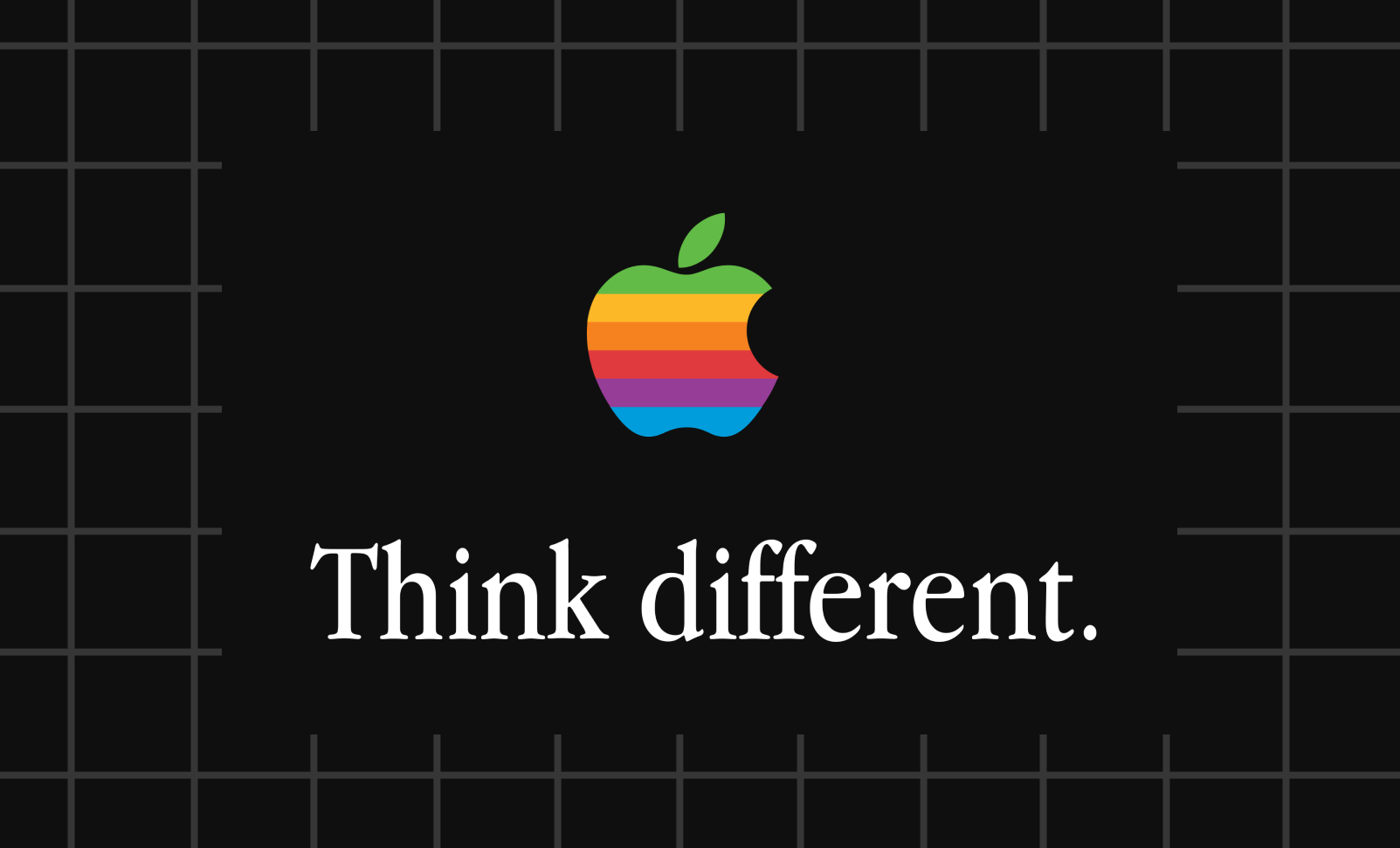Authenticity, unfortunately, has evolved from a deeply valued concept to a mere catchphrase in the world of marketing. It’s often casually dropped during boardroom discussions and brainstorming sessions, but its true essence seems to be lost amidst the noise. But let’s puncture through the commonplace usage of this term and take a deep dive: What does it truly mean to be authentic in marketing? Can brands fully embrace authenticity in an epoch dominated by trends and viral moments?
The Irresistible Charm of Authenticity
To a marketer’s keen eye, authenticity presents itself as an enchanting beacon. It croons tales of unwavering brand loyalty, tempts with the allure of distinction amidst fierce competition, and, in an era where cynicism is the consumer’s default stance, it appears to hold the master key to their hearts.

Apple is a classic exemplar in harnessing the magic of authenticity. Recall the “Think Different” campaign. This wasn’t merely a marketing strategy for computers; it was a resonating call to action for the dreamers, the visionaries, and the nonconformists. This vision of shared identity was Apple’s offering, and consumers didn’t just buy products; they bought into the vision.
The Treacherous Terrain of Authenticity
Let’s shatter any illusions. Authenticity isn’t a breezy path; as enticing as it may be, it is a complex maze, a precarious performance on the tightrope of consumer expectations. It’s more akin to navigating a labyrinth with blindfolds on. It’s a high-stakes gamble on the tightrope of consumer expectations where one misstep or a whiff of insincerity could result in a calamitous plunge from grace.
Consider the Pepsi ad featuring Kendall Jenner—a classic example of an authenticity pursuit gone awry. The attempt to tap into the spirit of social activism became a glaring display of tone-deaf messaging, trivializing significant societal issues instead of championing them. The result? A tumultuous social media backlash, a hastily pulled ad, and a painful dent in the brand’s reputation.

But this begs a deeper question: Why do brands, in their pursuit of authenticity, often stumble? Is it because they are trying too hard to fit into a mold that doesn’t represent their true essence? When brands mimic the superficial attributes of ‘authenticity’ rather than reflecting their core identity, they risk appearing contrived and insincere.
Consider this: If a brand’s attempt at authenticity fails, does it expose deeper inauthenticity? Did Pepsi’s misstep reveal a disconnection between its projected image and its understanding of its consumers? As brands strive to resonate with their audience’s values, do they inadvertently compromise their own, confusing the consumer perception of their identity?
True authenticity doesn’t stem from trend-chasing or shape-shifting to meet shifting public sentiment. It’s rooted in a brand’s essence, its fundamental values that remain constant in the face of change. It’s the harmony between a brand’s actions, words, and values. But how often do brands reflect on whether their pursuit of authenticity aligns with their core essence?
Navigating the terrain of authenticity means constantly questioning and revisiting what a brand stands for and ensuring that every communication, every campaign, resonates with that identity. It’s not about striking the right image but the congruence of image and essence. Only then can a brand truly navigate the treacherous terrain of authenticity.
The Marketer's Conundrum: To Trail or to Trailblaze?
Here lies the dilemma: To embrace authenticity or succumb to the security of trends? It’s a complex equation that every marketer grapples with. Following trends can provide a comforting sense of familiarity. It’s the path well traveled, a tried and tested formula that has consistently borne fruit. Yet, we must pause to consider the true cost of this comfort.

In the relentless chase of trends, brands often risk morphing into a monotonous echo of each other, their distinct voices diluted, their unique messaging blurred into a generic hum. A recent study found that 63% of consumers prefer to purchase from brands they perceive as authentic over competitors. This craving for authenticity is a palpable response to the homogeneity that results from trend-chasing.
Take the millennial and Gen Z consumers, generations characterized by their desire for authenticity and purpose. They’re not merely buying a product or a service; they’re investing in a narrative, a cause, an identity. A staggering 90% of Gen Z say they’re more likely to buy from a company that supports social and environmental issues.
And yet, the marketplace is cluttered with brands donning trendy disguises, parroting the same scripts, and dancing to the same tunes to woo these discerning consumers. The result? A jaded audience, yearning for a breath of fresh air, a hint of the genuine, a touch of the unique.
Let’s consider the potential dangers of this trend-following approach in a broader context. It’s like entering a crowded room and adapting yourself to mirror the attitudes, behaviors, and preferences of the majority in order to fit in. The immediate reward might be acceptance or popularity, but at what cost? You gradually lose your distinctive identity, your unique voice becomes muffled, and your inherent values may be compromised.
It’s a similar situation with brands. In the pursuit of approval, measured in likes, shares, and sales, they may risk losing their essence, their raison d’être. By constantly shifting their identity to meet ever-changing trends, they risk becoming a reflection of what’s popular rather than what’s true to them.
Herein lies the gravity of the marketer’s conundrum. In the quest to be accepted and liked, are we sacrificing the true identity of the brand? Are we shaping ourselves to match the prevailing trends, or are we confident enough to let the world see us for who we truly are? And more importantly, are we bold enough to carve our path and trailblaze rather than trail behind trends?
In marketing, as in life, authenticity isn’t merely about truth in communication; it’s about remaining true to one’s core identity, even in the face of shifting trends and changing consumer preferences. It’s about understanding that real, lasting connections aren’t built on the shaky grounds of trends but on the solid foundation of authenticity.
Now, the question is not whether we should follow trends or trailblaze our path. It’s about how we can harness the power of authenticity in the midst of changing trends to create an enduring brand legacy that transcends the constraints of time and trends.
Embarking on the Authentic Journey - Risks and Rewards
Designing an authentic marketing strategy is akin to charting a course through uncharted waters. There are no guarantees, no foolproof methods. It calls for an in-depth understanding of the brand’s core identity and a keen insight into consumer psychology. It demands the audacity to stand by your beliefs, even when the tide of conformity threatens to pull you under.
This is where Tailorie comes in. At Tailorie, we recognize the challenges brands face in maintaining their authentic identity amidst changing trends. We offer an innovative platform that enables brands to connect directly with their audiences, facilitating genuine interactions that reflect a brand’s true essence. We believe an authentic brand is not a prisoner of trends but a navigator of its own course.
Consider Patagonia, the outdoor clothing brand. Unapologetically eco-conscious, they dared to ask customers not to buy their products during the shopping frenzy of Black Friday. A gamble? Indubitably. Authentic? Absolutely. Effective? Their robust sales and devoted customer base speak volumes.

The Fearless Reality of Authenticity
Embracing authenticity in marketing isn’t a leisurely stroll in the park. It’s a thrilling expedition into dense, untamed wilderness fraught with challenges and surprises. But it might be time to cast aside trepidation and dare to be different.
So, here’s a thought to shake the foundations: What if we chose to embrace the uncertainty? What if we viewed authenticity not merely as a strategic choice but as a core philosophy? What if we dared to disrupt the status quo, to not just think outside the box but to dismantle the box entirely?
This proposition might seem daunting. But in a world where consumers are increasingly seeking genuine connections, it might be time for us to drop our facades and reveal our true selves. Isn’t that what being authentic truly entails?





